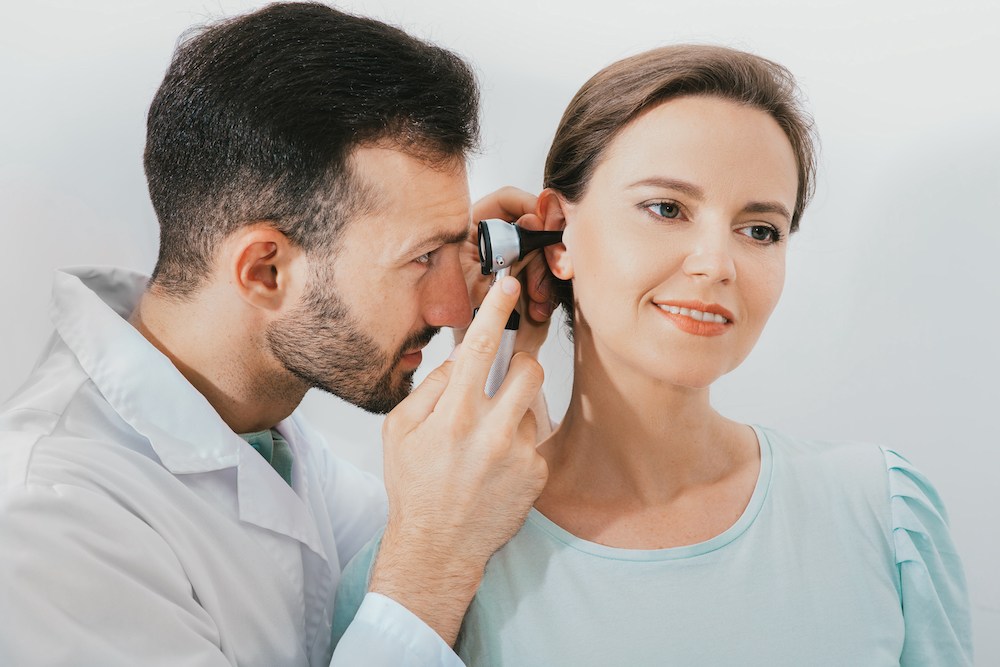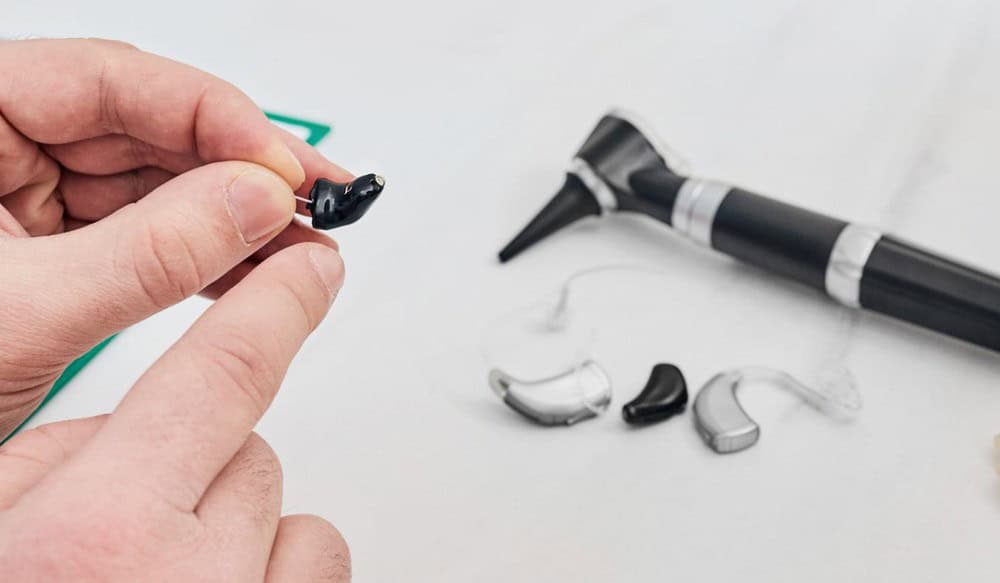The Importance of Early Detection in Childhood Hearing Loss
Children depend on their hearing for so much more than just following

By: admin | January 31, 2024
Understanding the importance of ear health is a fundamental aspect of maintaining your overall well-being, particularly when it comes to your auditory system. A critical part of this is knowing how to clean your ears safely and effectively. You might think that ear cleaning is as simple as using a cotton swab, but this method can often cause more harm than good. Instead, there are safer and more effective ways to ensure your ears are clean and healthy.
This knowledge not only helps you take better care of yourself but also significantly contributes to preserving your hearing health in the long run. So, whether you’re a long-time hearing aid user or just beginning your journey towards better hearing health, understanding how to properly clean your ears can make a world of difference.
Maintaining healthy ears is not just about cleanliness. It’s a vital step in ensuring your overall hearing health. Regular check-ups with your audiologist are a key part of this, as they can provide expert advice and catch any potential issues early on. This is closely tied to the importance of early detection of hearing loss, which can significantly improve the effectiveness of treatments and interventions.
Part of understanding how to keep your ears healthy and clean is learning about what makes up your auditory system. The ear is more than just a simple organ; it’s a complex system that plays a vital role in how we perceive sound. The ear is divided into three main parts: the outer ear, the middle ear and the inner ear. Each part has its unique function and contributes to our ability to hear.
Hearing is a complex process that starts with sound waves entering the ear. These waves travel through the ear canal, making the eardrum vibrate. The vibrations are then transmitted to three small bones in the middle ear. These bones pass the vibrations to the fluid in the inner ear, stimulating hair cells in the cochlea. These hair cells convert the vibrations into electrical signals that the auditory nerve carries to the brain, where they are interpreted as sound. This step-by-step process enables us to hear the various sounds in our environment.
Understanding your ears’ structure can help you appreciate their importance in maintaining good hearing health. Your ears are not just for hearing; they also play a significant role in balance and spatial orientation. So, take care of them – they’re doing more work than you might think!
Let’s address a topic that often causes confusion – ear cleaning. There are many misconceptions about this seemingly simple task, which can lead to unnecessary harm if not addressed.
Despite the common belief, using cotton swabs is not an effective or safe method for ear cleaning. The ears are designed to be self-cleaning, with earwax naturally migrating out of the ear canal. Inserting cotton swabs into the ear canal can push wax deeper, risking blockages and potential damage to the delicate structures.
Ears have a protective mechanism to expel excess earwax, and interfering with this process may lead to complications. It’s crucial to recognize that the ear’s self-cleaning ability is generally sufficient, and attempts to excessively clean the ears can disrupt the natural balance, possibly causing more harm than good.
Contrary to the common misconception that all earwax is bad, earwax is actually a crucial component of ear health. It serves as a natural defense mechanism, safeguarding the ears against dust, debris and foreign particles. Earwax is produced by ceruminous glands in the ear canal and is not inherently harmful. The wax’s consistency helps trap potential contaminants, preventing them from reaching the delicate structures of the ear. The natural process of earwax expulsion involves jaw movements, like chewing or yawning, which helps move the wax from the ear canal to the ear’s outer part. Additionally, the skin’s migration in the ear canal gradually moves old earwax outwards.
Understanding the protective role of earwax is essential in promoting ear health, and interventions to remove it should be approached with caution to avoid disrupting this natural defense mechanism. If you’re experiencing issues with excessive wax or discomfort, it’s best to consult with an audiologist who can provide safe and effective solutions for your specific needs.
Let’s discuss the potential hazards of incorrect ear cleaning practices. Improper ear cleaning can lead to several complications, some of which can be quite serious.
Let’s now focus on safe techniques for cleaning your ears at home. Cleaning your ears doesn’t have to be a complicated task. With the right knowledge and tools, you can effectively maintain your ear health without causing harm.
First, remember that our ears are self-cleaning. Over-cleaning can disrupt this natural process and lead to issues like dryness or irritation. If you feel the need to clean your ears, use a damp cloth to gently wipe the outer part of your ear. Avoid inserting anything into your ear canal as this can push wax further in and potentially cause damage.
Second, over-the-counter ear drops can be used to soften hardened wax in your ear canal. These drops usually contain substances like mineral oil or hydrogen peroxide that help break down the wax, making it easier for it to naturally exit the ear canal. However, always consult with an audiologist before using any at-home cleaning kits or solutions.
Staying hydrated is essential for overall health, and your ears are no exception. Adequate hydration helps maintain the right balance of fluid in your body, including your ears. A well-hydrated body can help ensure that earwax is at the right consistency for it to carry out its function effectively. Dehydration, on the other hand, can lead to thicker and stickier earwax that may not move as easily, potentially leading to blockages. So, remember to drink plenty of water throughout the day – your ears will thank you!
Just like the rest of your body, your ears need certain nutrients to function optimally. For instance, foods rich in omega-3 fatty acids, like fish and flaxseeds, can help improve blood flow to the ears, supporting their health. Similarly, foods high in antioxidants and vitamins can help protect your ears from damage by free radicals. So, consider incorporating a variety of fruits, vegetables, lean proteins and healthy fats into your diet to support your ear health.
Knowing when to consult an audiologist for ear cleaning is important. It’s not always easy to know when professional help is needed. Certain signs, however, can indicate it’s time to seek expert advice.
Experiencing discomfort or pain in your ears may be a sign that something isn’t right. Similarly, if you notice a change in your hearing or have a constant ringing sound in your ears, it might be time to book an appointment with an audiologist.
Knowing the right time to consult a specialist for ear cleaning has numerous benefits. It can prevent potential harm caused by incorrect cleaning practices and ensure that any underlying issues are addressed promptly. This knowledge is essential for maintaining optimal ear health and preserving your overall hearing health.
Audiologists employ several safe and effective methods to remove earwax, ensuring optimal ear health without causing harm. One common approach is irrigation, where warm water or a saline solution is gently flushed into the ear canal to soften and dislodge the wax. Another method involves manual removal using specialized tools like curettes or suction devices, performed by a trained professional in a controlled environment. Microsuction, a gentle vacuuming technique, is increasingly popular, offering a precise and minimally invasive way to extract earwax.
Additionally, audiologists may recommend over-the-counter ear drops to soften the wax, facilitating its natural expulsion. The choice of method depends on factors like the patient’s age, the consistency of the earwax and any underlying ear conditions. It’s important to consult with an audiologist to determine the most suitable approach for safe and effective earwax removal.
An audiologist can provide personalized care tailored to your specific needs. They not only help keep your ears clean but also monitor for any potential issues that could impact your hearing health. They can guide you on the best practices for maintaining ear cleanliness and overall hearing health. So, don’t hesitate! Make an appointment with a hearing health professional today and take a proactive step towards preserving your hearing health.
Let’s now discuss the ideal frequency for ear cleaning. It’s important to note that there isn’t a one-size-fits-all answer. The frequency of ear cleaning can vary greatly depending on individual factors like your body’s natural wax production and your lifestyle.
While some people may need to clean their ears regularly due to high wax production or frequent use of hearing aids, others might not need to clean their ears as often. It’s always best to consult with a hearing health professional who can provide guidance tailored specifically to your needs. Remember, over-cleaning can disrupt the natural self-cleaning process of your ears and potentially lead to complications. So, when in doubt, seek professional advice!
Keeping your ears clean and healthy is a critical part of maintaining your overall hearing health. As we’ve discussed, it’s not as simple as using a cotton swab – in fact, that can often do more harm than good. Instead, understanding the right techniques and knowing when to seek professional help can make all the difference.
At Rametta Audiology & Hearing Aid Center, we’re here to guide you on this journey towards better ear health. Our team is equipped with the knowledge and tools necessary to provide safe and effective solutions tailored specifically to your needs. Whether you’re experiencing issues with excessive wax or discomfort, or simply want advice on best practices for ear cleaning, don’t hesitate to reach out.
Tags: how-to guides

Children depend on their hearing for so much more than just following
By: admin | June 20, 2025

As parents, we want our children to experience all the joys of growing up
By: admin | February 18, 2025

In the last few years, hearing aid technology has taken a big step forward
By: admin | October 30, 2024
